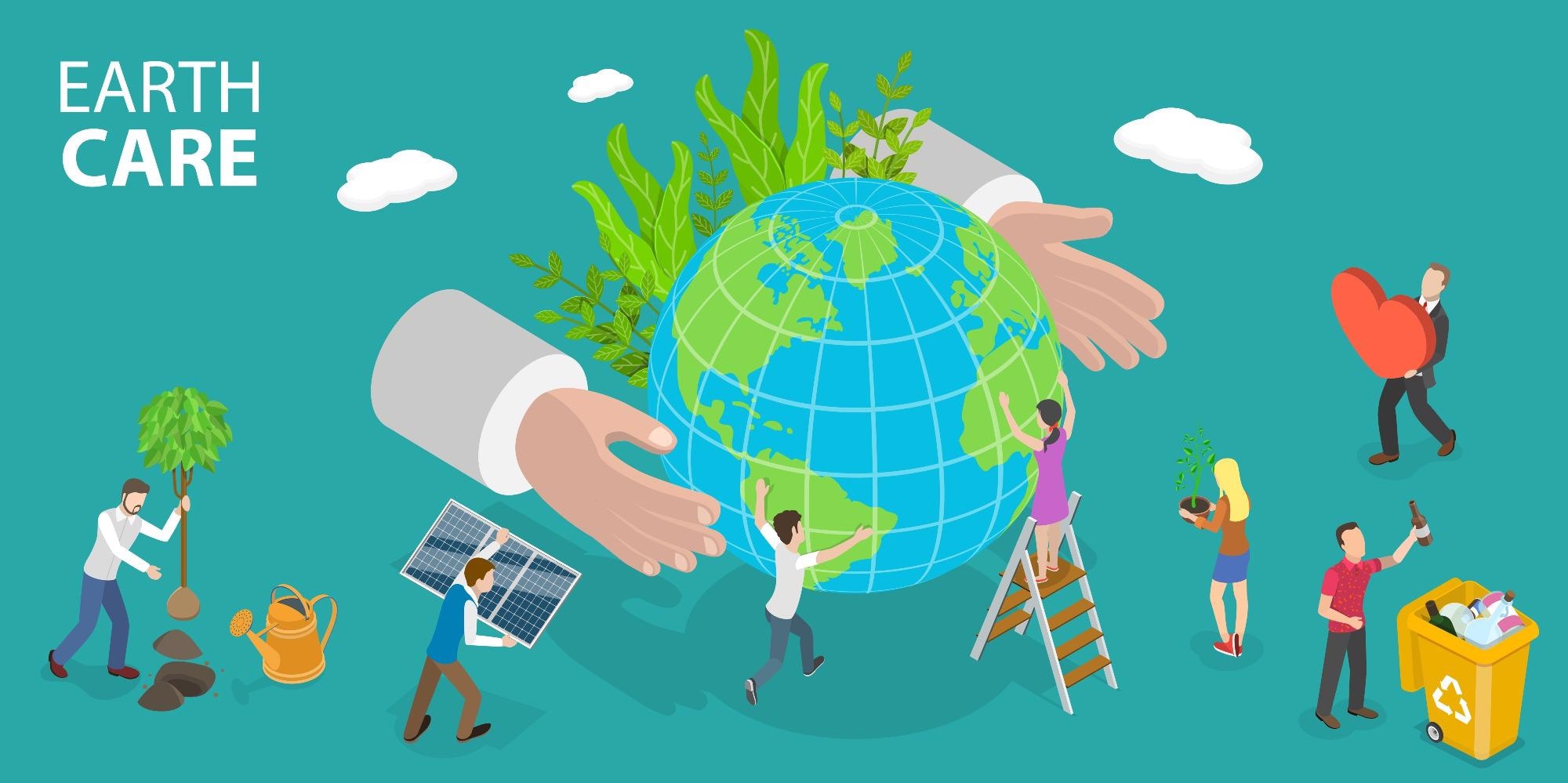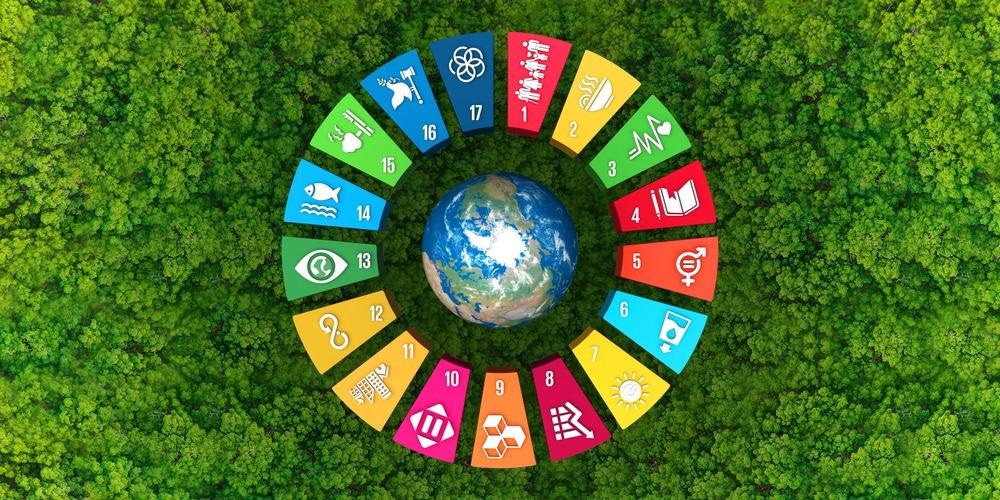The 2030 Agenda for Sustainable Development contains seventeen Sustainable Development Goals (SDGs) focusing on meeting the primary requirement of nature and human beings. This article discusses the vital role of biodiversity in realizing the SDGs.

Image Credit: TarikVision/Shutterstock.com
The Importance of Biodiversity
The Convention on Biological Diversity (CBD) has defined biodiversity as "the variability among living organisms from all sources including … diversity within species, between species and of ecosystems.". Biodiversity includes the existence of and interactions between various life forms.
Scientists stated human health and welfare are directly linked to the ecosystem's health and abundance of biodiversity loss. Biodiversity is directly associated with the global economy, especially forestry, fisheries, agriculture, and livestock rearing. A large percentage of the global population is directly dependent on natural resources for their livelihood. A healthy ecosystem and rich biodiversity are regarded as the "wealth of the poor."
Advancements in scientific research have established a relationship between biodiversity loss and climatic changes. CBD strongly highlighted the repercussions of destruction or fragmentation of the ecosystem. Such events reduce carbon dioxide absorbance, leading to increased global greenhouse gas (GHG) emissions, which accelerates climate change.
Biodiversity and SDGs
The importance of biodiversity in realizing SDGs by 2030 is discussed below:
SDG1: Biodiversity provides resources and income, particularly in rural areas. A large percentage of the rural population, i.e., between 50% and 90%, depends on ecosystem services for their livelihood. Biodiversity supports humans by providing firewood, freshwater supply, a diverse range of medicinal plants, food, etc. Therefore, biodiversity conservation will help maintain the long-term economic, social, and environmental resilience of rural livelihood, which could help reduce poverty.
SDG 2: It intends to eliminate world hunger by ensuring food security and promoting sustainable agriculture. Scientists emphasized that biodiversity is the most important element of food security and enhances the nutritional levels of food products. Numerous individuals depend on food gathered from ecosystems such as rivers, grasslands, forests, etc. Biodiversity ensures food security by protecting agricultural production from various threats, such as pathogenic outbreaks, extreme climate, etc. Additionally, biodiversity enhances food production considerably by promoting crop pollination. Pollinator-dependent crops contribute to 35% of the global volume of crop production. Biodiversity conservation is strongly related to healthy agroecosystems, which have elevated agricultural production via the use of healthy seeds, fertile soil, and superior water management systems.
SDG 3: The main focus of SDG 3 is maintaining healthy lives for all age groups. Research has shown that one in four deaths is associated with environmental risk factors. A healthy ecosystem helps reduce pollution in the air, soil, and water. Sustainable agriculture ensures the minimal application of chemical fertilizers and pesticides and protects the soil and human beings from all the adverse effects of these chemical products.
SDG 4: As biodiversity has significantly inspired many fields of science, arts, and literature for centuries, continual exploration of biodiversity will promote lifelong education for all.
SDG 5: Scientists believe gender equality is essential for biodiversity conservation and the smooth functioning of a healthy ecosystem. Women play an essential part in agriculture, providing nutrition and supporting the family using ecosystem services, e.g., collecting firewoods and food from forests. Acknowledging the role of women as a manager of natural resources will help in sustainable development.
SDG 6: Natural riparian ecosystems are important for a clean and constant water supply. Thereby, biodiversity conservation along the river catchment is an effective solution associated with the sustainable management of water. This could effectively replenish groundwater and regenerate drinking water.

Image Credit: MintBlac/Shutterstock.com
SDG 7: It ensures an affordable and constant energy source for all. Hence, investing in biodiversity conservation ensures investing for billions of people who depend on natural resources for heating and cooking. Additionally, nature's contribution is key to producing biofuels. Scientists stated that implementing appropriate conservation measures would help enhance the longevity of the energy supply.
SDG 8: Healthy ecosystems (both marine and terrestrial) offer a large number of services that promote sustainable economic growth. Biodiversity conservation could help enhance agricultural productivity and ensure the long-term viability of natural resources.
SDG 9: Biodiversity and healthy ecosystems can promote the development of cost-effective, resilient natural infrastructures that could aid sustainable industrialization. For instance, mangrove forests and coral reefs protect the coats from flooding, which occurs as a result of climate change. Natural infrastructure, which includes vegetation, can prevent soil erosion and restrict the soil pollutants from reaching the water bodies. These green infrastructures have proved to be a beneficial and cost-effective approach.
SDG 10: Investing in biodiversity conservation and promoting sustainable practices among local communities would considerably reduce inequality within and among countries. Sustainable practices would enhance employment opportunities in rural areas. An increased association with nature also improves mental and physical health.
SDG 11: Biodiversity supports the functioning of cities, especially concerning improving air quality, reduction of water runoff, and provision of green areas for recreation. Therefore, investment to increase green areas around or within cities is extremely important.
SDS 12: It is crucial to maintain sustainable consumption and production patterns. Both production and consumption entail transforming natural resources, which impact biodiversity.
SDG 13: Climate change is the primary factor of biodiversity loss. Hence, the development of strategies or policies targeted at sustainable development, and restoring biodiversity and climate change, are significant for both nature and humans.
SDG 14 & 15: Conservation and sustainable use of marine ecosystems (SDG 14) and terrestrial ecosystems (SDG 15) are extremely important for sustainable development.
SDG 16: Promoting a peaceful, inclusive society where justice is provided to all will decrease violence and social insecurities. Transparent decisions over social and environmental issues will help develop a peaceful society.
SDG 17: Implementation of all SDGs and regenerating global partnerships for sustainable development will strengthen global biodiversity. Additionally, the implementation of innovative science and technologies could help monitor the progress of the 2030 Agenda.
These guidelines show how biodiversity is innately associated with SDGs. Implementing these rules would make the world a better place to live with improved environmental conditions, food security, and reduced disease infestations.

Image Credit: Dirk Hudson/Shutterstock.com
Further Reading